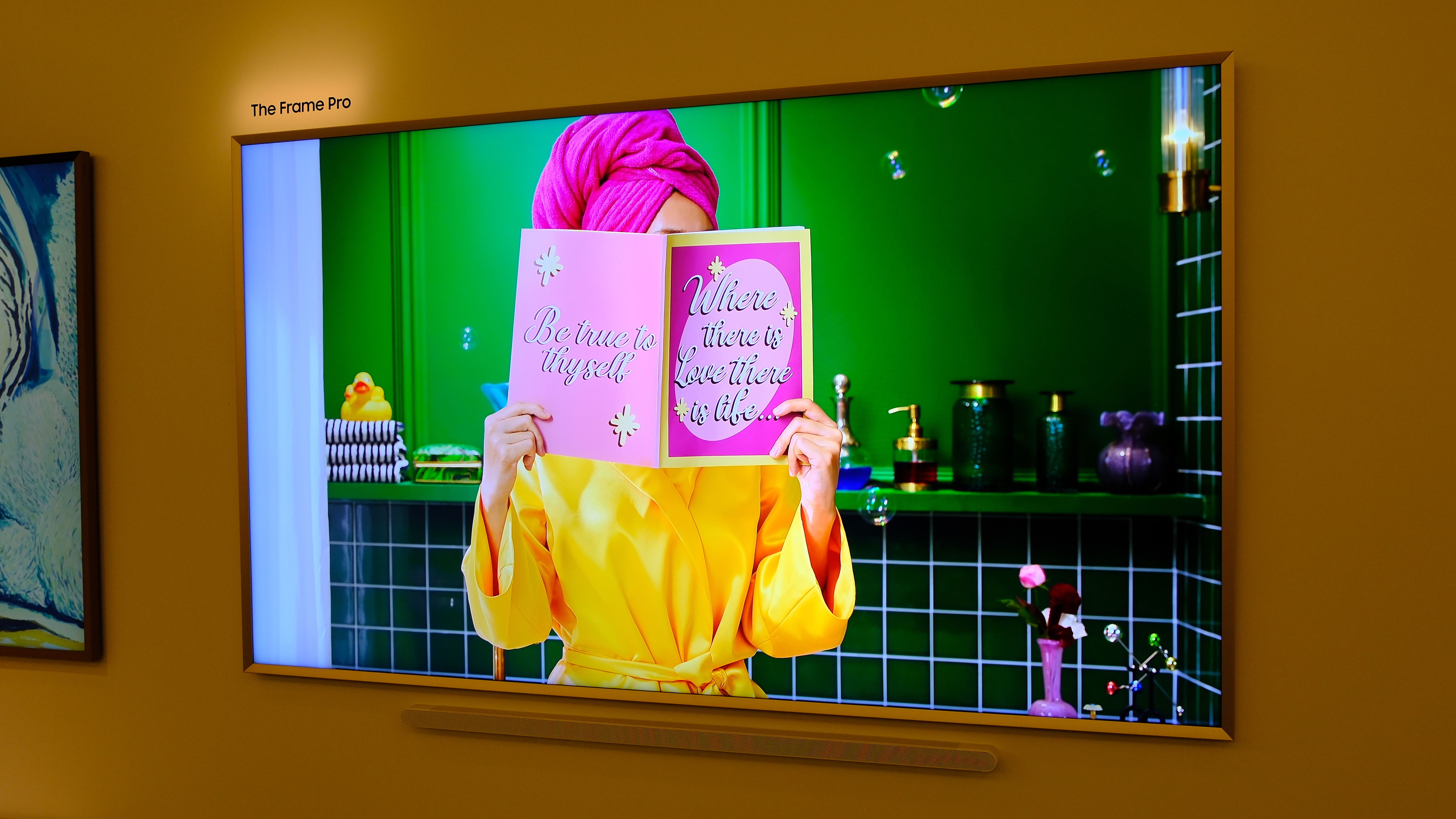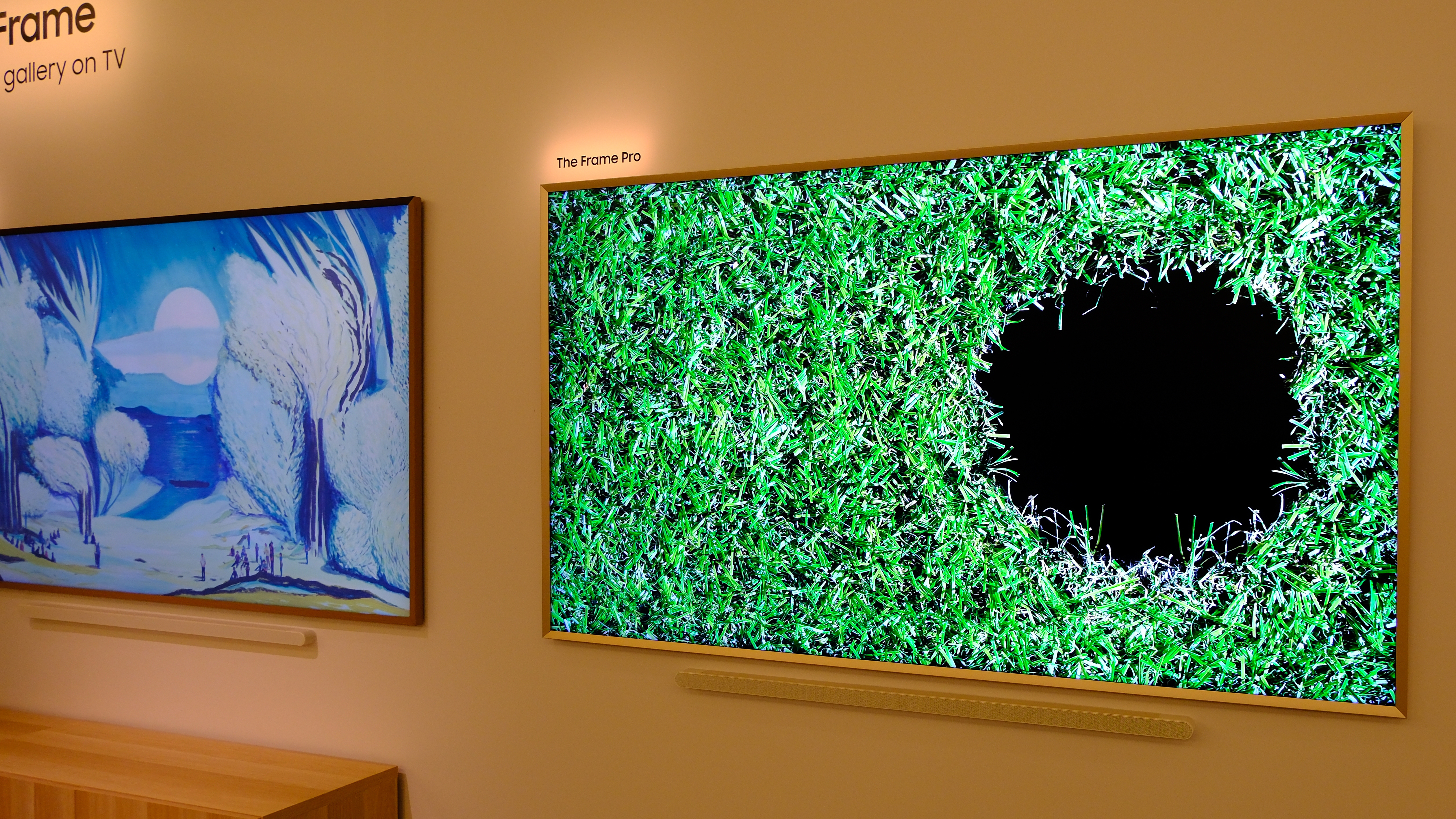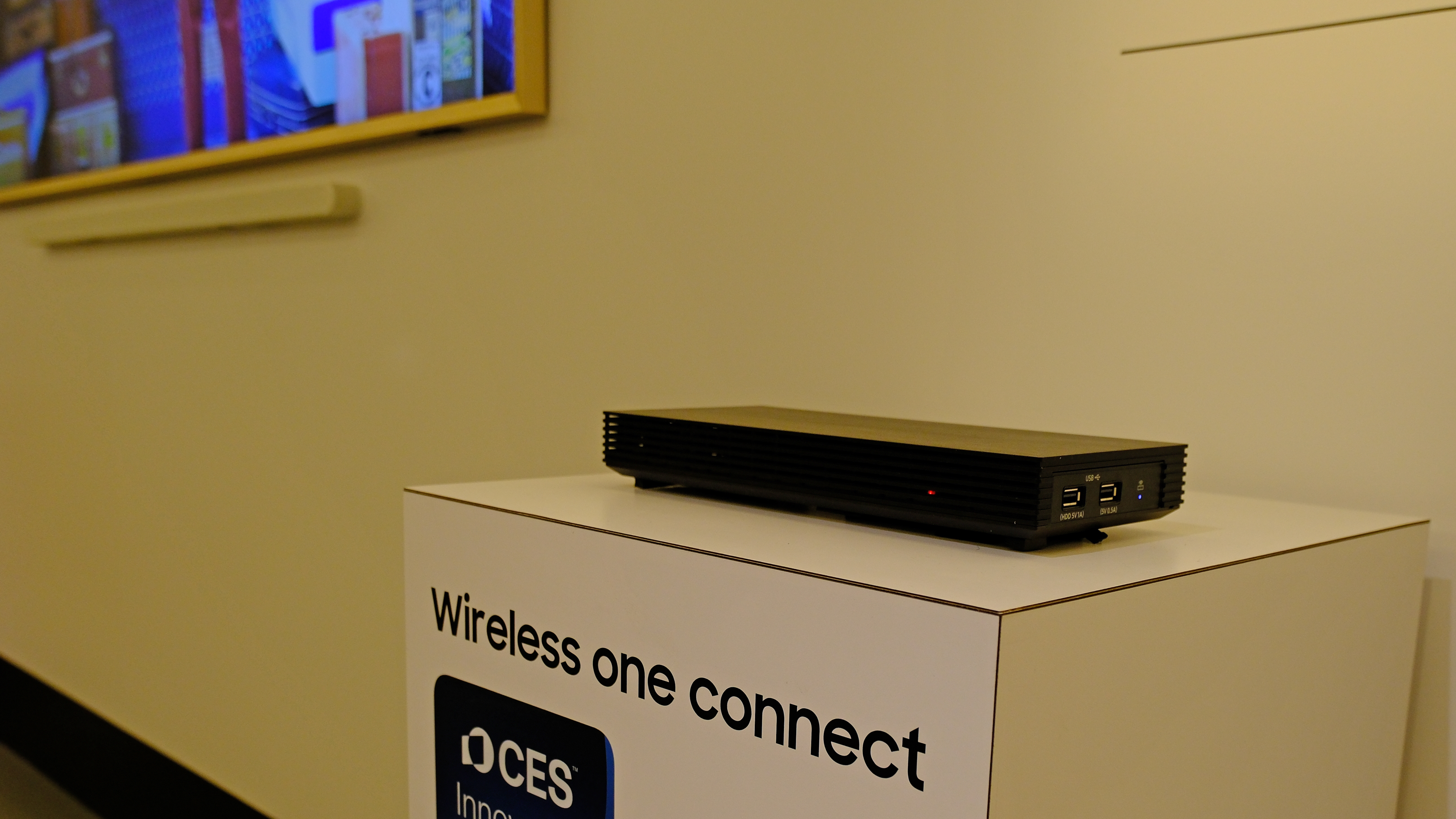Samsung has just unveiled its new The Frame Pro TV, which finally adds the company’s Neo QLED mini-LED tech to The Frame range that previously relied on edge-lit QLED displays.
Not only that, but The Frame Pro also adds a Wireless One Connect external connection box, meaning that you can hang The Frame Pro on the wall with a power cable going into it and nothing else – all your set-top boxes and so on connect into the wireless external streaming box, which you can place anywhere within 33 feet of the TV (including inside a cabinet), and the video is beamed in 4K 144Hz over to the TV. Samsung says there should be no noticeable latency here – specifically, the latency is said to be around 1.5 frames, and well under 20ms.
I saw The Frame Pro in action next to a regular 2024 The Frame TV, and the difference is staggering. We’ve always had a slightly cool relationship with The Frame TVs here on TechRadar, because they’re wildly popular and we understand why people like them, but it always rankled that they used such mediocre image tech.
For those who know Samsung’s range, The Frame has always been equivalent to the Q70 models, meaning and edge-lit QLED panel with Samsung’s Dual-LED tech, but with a matte display that elevates back tones and weakens the already-middling contrast.
Now, The Frame Pro is still equivalent to Samsung’s Q70 range… it’s just that in 2025, we’re talking about a model called the QN70F that’s a new cheaper mini-LED model. On top of all this, Samsung has also added variable refresh rate support up to 144Hz, making it a better gaming TV.
That’s the background, but the important thing is that in practice, the new screen is a total game-changer.

Wow, actual HDR!
The difference between the classic The Frame model and the Pro is night and day. Local dimming when watching movies and TV means that it produces something much closer to real black tones in dark areas, while the bright highlight areas are several levels more vibrant, and have a far more realistic sheen to them. The extra brightness also means that colors are massively richer and bold.
It gives the feeling that the picture you’re seeing is just a lot more solid; the shadows actually look shadowy, and the light areas gleam, as if it’s real light hitting an actual object.
The old model looks hazy and washed out by comparison, and with black tones pulled towards being gray and light tones also being pulled towards being gray, it’s just fundamentally unclear in comparison to the Pro.
It’s not just about the small highlights, though – the fullscreen brightness is massively better, which means things like TV and sports are much clearer and more rewarding to watch.

Careful with the art
You might be worried that all this vibrancy may not be a great fit for the Art Mode that makes The Frame such a success. But I saw a direct comparison of that aspect with the old model, and they look incredibly similar.
Samsung says that when Art Mode is active, local dimming is switched off, which means you’ve got an even light across the screen and no ‘HDR‘ effect. I suspect Samsung may also be limiting the brightness of the backlight so it appears to be a level of light that’s closer to ambient light, but that’s just speculation on my part.
Either way, it looks basically the same as the old The Frame models, which is to say: a very nice-looking bit of digital art reproduction.

What about wireless?
I don’t have much to say about the wireless box from my time staring at The Frame Pro, but that’s probably a good sign – the whole point is that you shouldn’t notice it if it’s working properly!
But one thing to note is that it’s much smaller than the old wired One Connect box the previous The Frame models use – it looks like it must be half the size by volume, easily. It looks a little bit like a tiny PlayStation 2 which I personally love to see.
I couldn’t do anything to try to break its wireless signal or test its limits, so we’ll have to try that when we get our hands on a set for a full review.
The big piece of information we’re missing about The Frame Pro is its price. I expect that it will cost significantly more than the Samsung QN70F, given it’s the equivalent of this screen in terms of image quality, which will probably keep it out of our list of the best TVs – we value bang for your buck too much.
But if Samsung can find a decent balance here, we’ll definitely be able to more wholeheartedly recommend The Frame Pro as a TV that works as well for the motion arts as for the classical arts.
You might also like
TechRadar will be extensively covering this year’s CES, and will bring you all of the big announcements as they happen. Head over to our CES 2025 news page for the latest stories and our hands-on verdicts on everything from 8K TVs and foldable displays to new phones, laptops, smart home gadgets, and the latest in AI.
And don’t forget to follow us on TikTok and WhatsApp for the latest from the CES show floor!






















+ There are no comments
Add yours